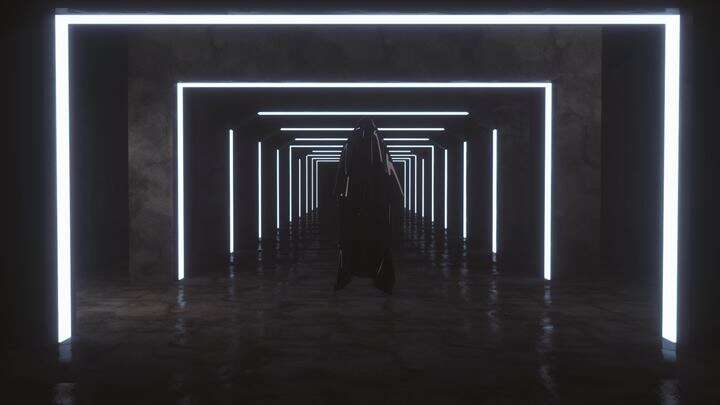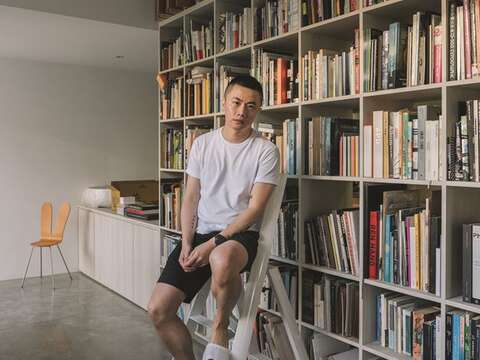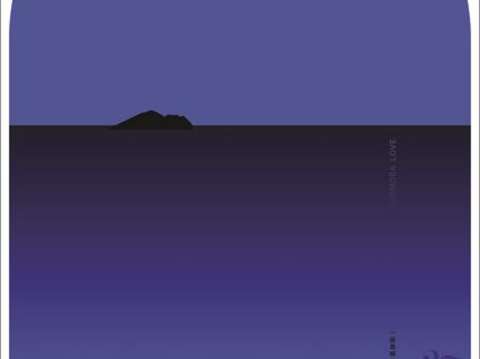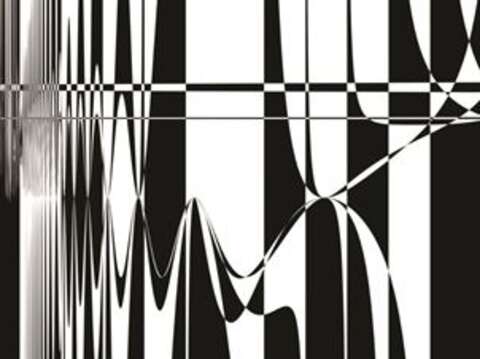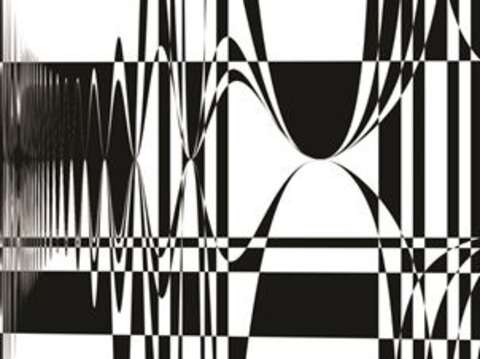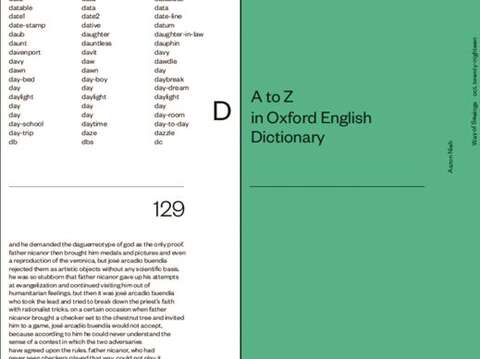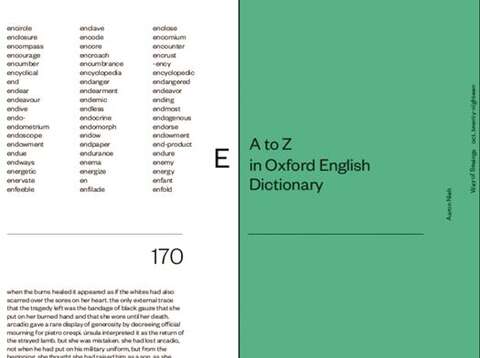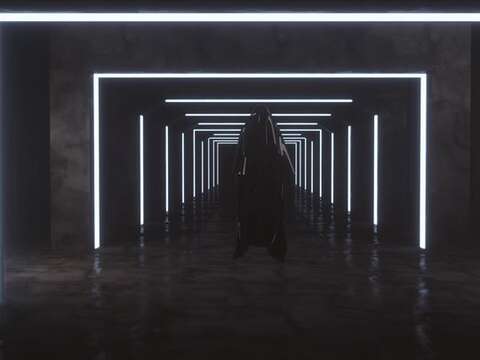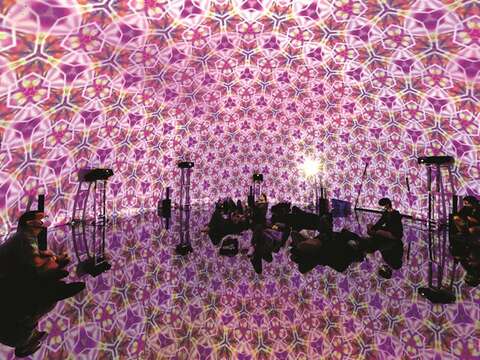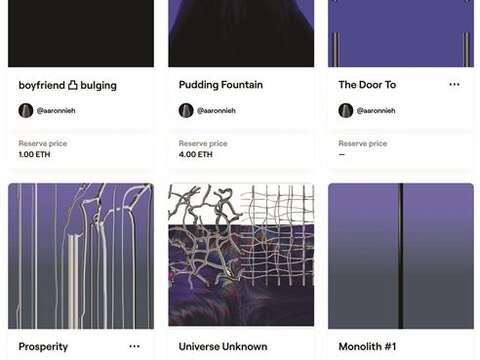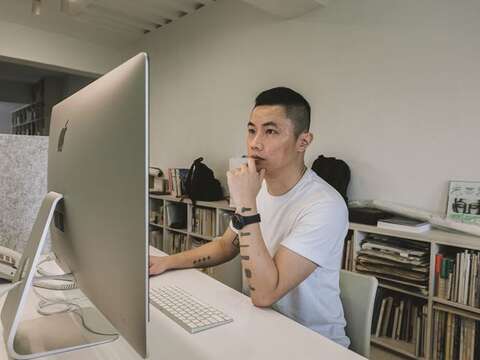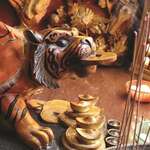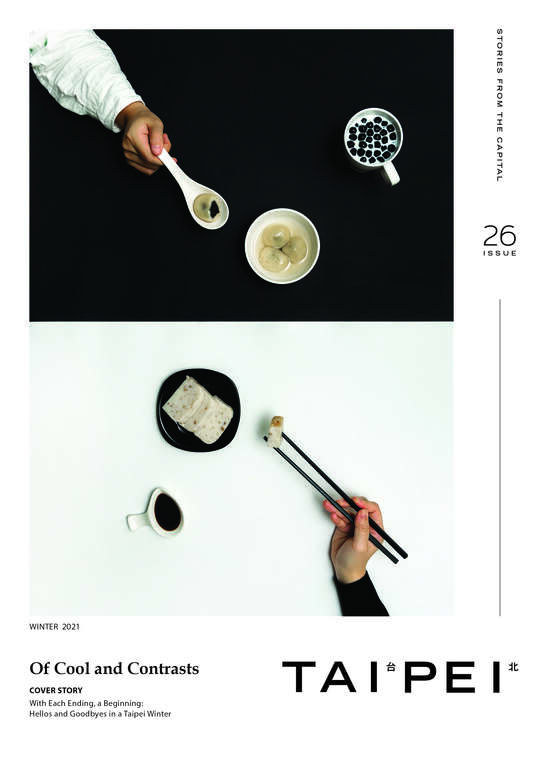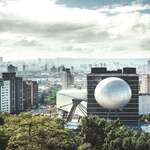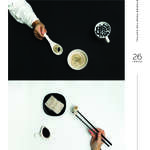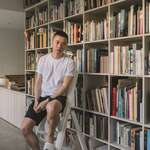Post date:2021-12-10
1323
Aaron Nieh on the Digital Trends Reshaping Taiwanese Creativity
Author Seb Morgan
Photographer Samil Kuo, C-LAB
Graphic Design Aaron Nieh
Though it may lack the same historic international recognition as London or Paris, Taipei's art scene has been the focus of increasing international attention over the past two years, particularly due to Taiwan's successful handling of the COVID-19 pandemic. But while the mostly unfettered operations of the city's museums and galleries were what people were talking about in 2020, its local developments in digital art are driving conversations in 2021.
44-year-old designer Aaron Nieh (聶永真) is at the forefront of those conversations. Born in Taichung (台中) and based in Taipei, this homegrown creator has garnered a number of impressive accolades over the years, including a German Red Dot Award, an IF Communication Design Award, and an award for Best Album Design at the Golden Melody Awards (Taiwan's Grammy's). Ahead of our winter issue, TAIPEI met him at his Minsheng Community (民生社區) studio to talk about code art, Non-Fungible Tokens (NFTs), and other trends that are reshaping new media at home and internationally.
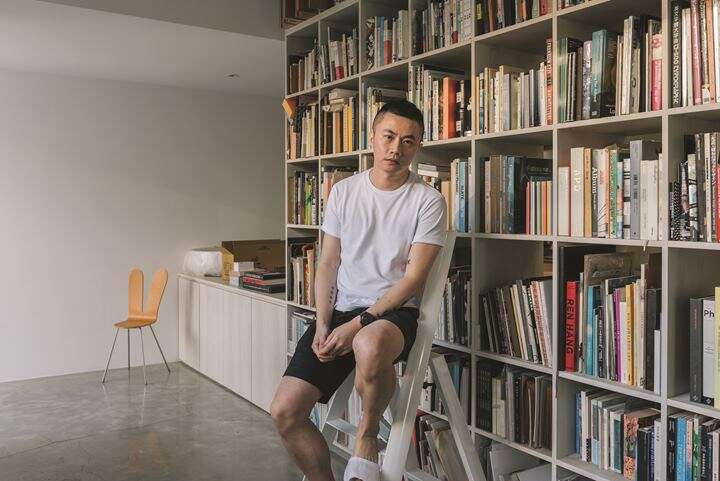 ▲Aaron Nieh, who first gained fame in the field of graphic design, has recently stepped into the world of digital art in Taipei, and continues to create great works that surprise people.
▲Aaron Nieh, who first gained fame in the field of graphic design, has recently stepped into the world of digital art in Taipei, and continues to create great works that surprise people.From Covers to Code Art
As digital artists in Taiwan go, it's difficult to overstate Nieh's importance. Arguably one of the most recognizable names in his field, Nieh has created designs for everyone from Taiwan Beer (台灣啤酒) to 7-Eleven to President Tsai Ing-wen (蔡英文) — and in the wake of the pandemic helped engineer the viral "Taiwan Can Help" New York Times ad that threw Taiwan's exclusion from the World Health Organization (WHO) into the global spotlight. Just a few months ago, the designer made headlines again, when NFT cover art he created for VOGUE Taiwan's July issue sold at auction for 30 ETH (just over US$140,000 at the time of writing).
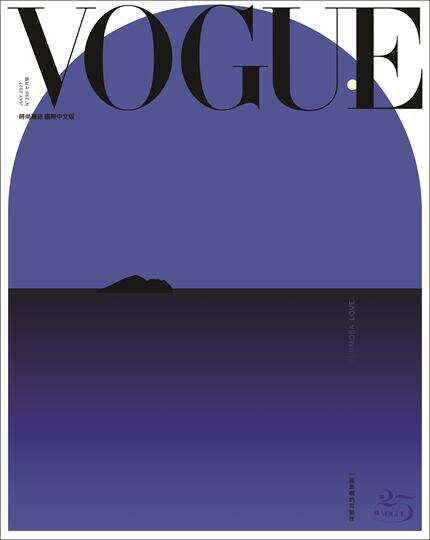 ▲With the theme of "Formosa Love," the collaboration between Nieh and VOGUE Taiwan became Taiwan's first NFT magazine cover. (Graphic Design/Aaron Nieh)
▲With the theme of "Formosa Love," the collaboration between Nieh and VOGUE Taiwan became Taiwan's first NFT magazine cover. (Graphic Design/Aaron Nieh)Nieh's background is in graphic design, but after he went abroad to study in Belgium and the UK, his interest shifted toward code art. "I already had my firm here in Taipei, but I wanted to take a sabbatical to explore new creative channels," he says.
A medium that has been rapidly rising in popularity since the 2000s, code art is an incredibly diverse category of computer programming in which the goal is to produce something creative. Rather than work through more traditional software platforms, code artists design everything from scratch, with essentially infinite creative possibilities.
RAVISION, one of Nieh's recent generative works, is a strobing black and white spectrogram that throbs to the beat of a heavy techno track. "The difference between regular video files and a motion piece that has been generated through coding, is with this you get variations. The movements won't always be the same," explains Nieh. "Code art can also be programmed to react to music."
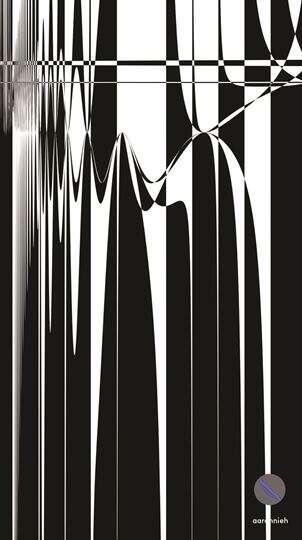 | 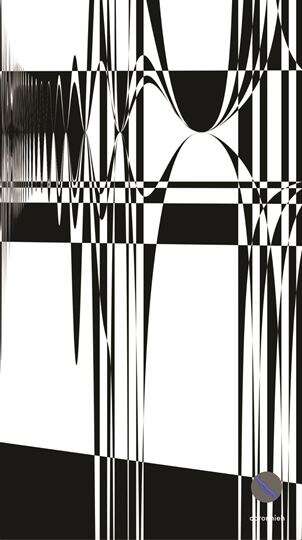 |
Toying with New Technology
"I find innovation really exciting," says Nieh, who says experimenting is arguably the most interesting part of his field. "I love toying around with new technology. You know, digging around and seeing what I can do with it."
"The technical aspect of creative coding can be quite challenging, especially when you first start out, but once you have the basics of a project down, you can do things that would be far too complicated or time- consuming to achieve through conventional software."
Another of Nieh's more eye-catching recent projects shows back-to-back, 600-page digitized copies of the Oxford English Dictionary and Gabriel García Márquez's epic One Hundred Years of Solitude, that automatically flick through from cover to cover in under 60 seconds.
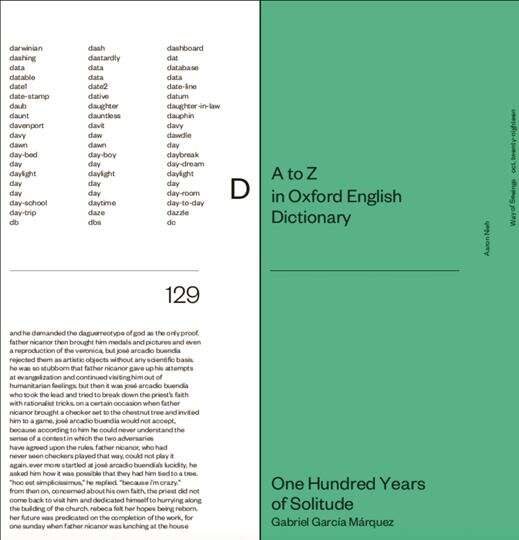 | 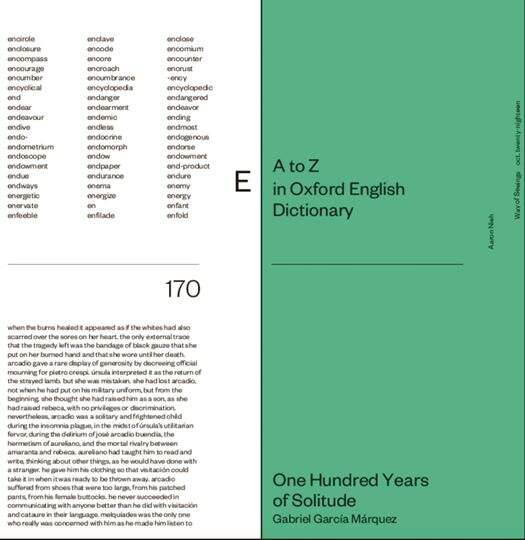 |
▲Through coding technology, the 600-page Oxford English Dictionary can be quickly composed from A to Z in just one minute. (Graphic Design/Aaron Nieh)
✔️Click here to check out the digitized copies of the Oxford English Dictionary and One Hundred Years of Solitude online
On his influences, Nieh explains that studying abroad forced him to open up his creative style. "Studying design in English really encouraged me to take different perspectives with my work, especially with typography, because of the different alphabets," he explains. "That definitely encouraged me to consider different shapes and styles in my work."
For those looking to experience inspiring digital artwork in Taipei, meanwhile, Nieh points to the Taipei Digital Art Center (台北數位藝術中心), as well as the Taiwan Contemporary Culture Lab (台灣當代文化實驗場), a former military air base that since opening in 2018 has stood out for its dynamic, interdisciplinary collections.
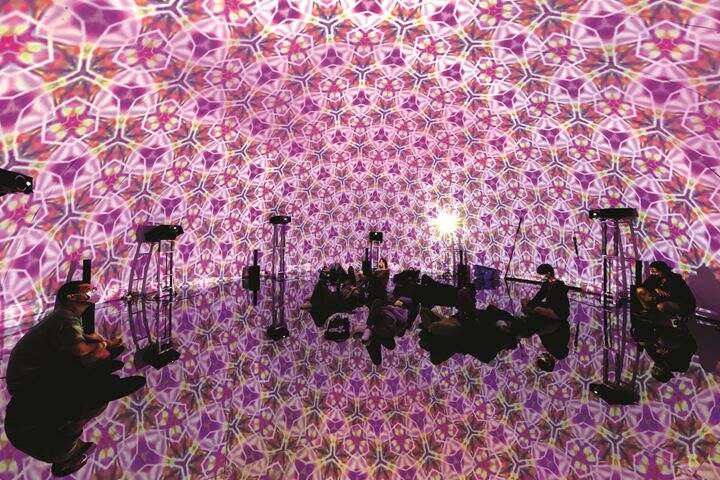
"Outside of those collections, there are some fascinating things being done locally with digital," he says, adding that one of his favorite creatives at the moment is Rivers Yang, a Ming Chuan University (銘傳大學) graduate and graphic designer instantly recognizable for her use of distorted shapes and fluorescent, retro-leaning colors. "Another person to keep your eye on is Mark Chang (張以得), who is doing great stuff with 3D." Nieh previously collaborated with Chang to create an eerie bust of Taiwanese pop singer Aaron Yan (炎亞綸), which is cracked open to reveal identical concentric layers of the singer's face nesting within.
The Secret Code to Digital Scarcity
Though creative coding lends itself to infinite creative possibilities, it was until recently very difficult for artists to sell their work. "Before, you needed to mount your work physically, either by printing it or displaying it on a digital screen if you wanted to bring it to market," explains Nieh, adding that even then, piracy was still a concern for many digital artists. "That's why NFTs are what most digital designers and artists are talking about right now."
One of the tech-world's big stories of 2021, NFTs are essentially certificates of authenticity that allow proven ownership of digital items. Just about anything can be turned into an NFT (songs, gifs, even tweets), but a lot of the financial focus so far has been on trading digital art.
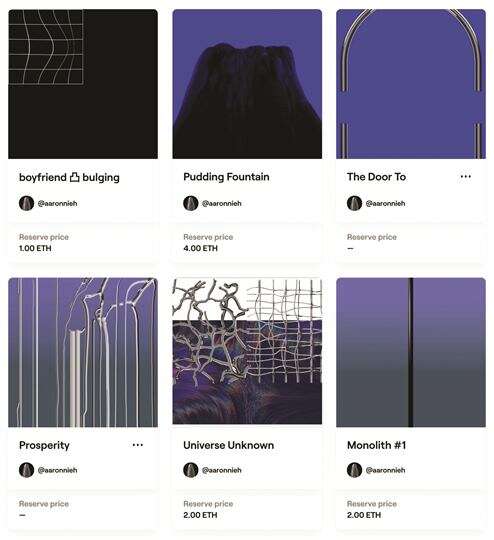
"Being able to prove that a piece of digital content is the original and not a copy has huge implications for the art world. NFTs mean that we can directly trade online through virtual auction spaces, like Foundation," Nieh says, referring to the platform where some of his recent works can be viewed and purchased. "Anyone can view the art, but because of NFTs, the pieces only have one owner."
Money Isn't Everything
At auction, many high-profile NFTs have sold for extremely high prices. In September, the first NFT to come to auction in Europe, a trio of graphics by the Bored Ape Yacht Club, sold almost immediately for an incredible £982,500 (US$1,355,835). But as art investors scramble to ride the wave, Nieh is wary of what this high financial appeal might mean for the quality of the art itself.
"Buyers are sometimes only seeing NFT art as an investment, and they're buying pieces without much consideration of the art itself. It's a real shame because it has encouraged some creators to create high volumes of low-quality NFTs in the hope of making quick profits. They're not really pushing the limits of what they can achieve with digital art."
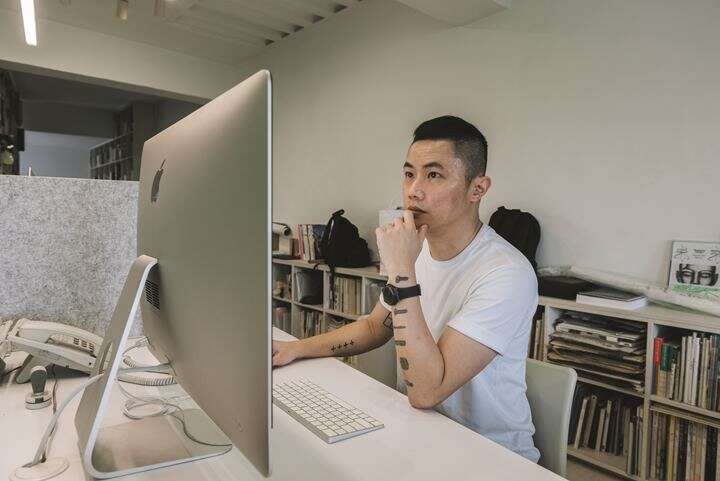
The Future of Digital Art in Taipei
The implications of the NFT technology aren't merely financial. Nieh points out that digital authenticity is helping us rethink how new media art can be displayed and experienced. "Previously, it was all about mounting the work in physical space. Like I said, normally on a frame or by printing it out. But by certifying the authenticity of a digital item, we can see the originals online or view them in a physical space using augmented reality."
Then there's the metaverse, the collective name for an immersive world of digital spaces that, to oversimplify things, combine gaming, artificial intelligence, augmented reality, virtual reality, and cryptocurrency. It sounds like science fiction, but in October legacy auction house Sotheby's launched a temporary run of their first all-digital NFT metaverse, featuring 53 works from 19 collectors.
"As digital artists, we're fascinated by the possibilities that lie ahead of us with NFTs and the metaverse," says Nieh. "We're talking about a virtual world that takes digital art far beyond image galleries and social media."

Gallery
Popular articles
 The Old and New of Shilin (TAIPEI Quarterly 2021 Winter Vol.26)
The Old and New of Shilin (TAIPEI Quarterly 2021 Winter Vol.26) TAIPEI Quarterly 2021 Winter Vol.26
TAIPEI Quarterly 2021 Winter Vol.26 The Gentle Beast Under the Table: A Guide to Worshipping Tiger God (TAIPEI Quarterly 2021 Winter Vol.26)
The Gentle Beast Under the Table: A Guide to Worshipping Tiger God (TAIPEI Quarterly 2021 Winter Vol.26) Aaron Nieh on the Digital Trends Reshaping Taiwanese Creativity (TAIPEI Quarterly 2021 Winter Vol.26)
Aaron Nieh on the Digital Trends Reshaping Taiwanese Creativity (TAIPEI Quarterly 2021 Winter Vol.26) DuoFu Holidays: Opening up a New World of Travel for the Mobility Challenged (TAIPEI Quarterly 2021 Winter Vol.26)
DuoFu Holidays: Opening up a New World of Travel for the Mobility Challenged (TAIPEI Quarterly 2021 Winter Vol.26) Better with Age: Handmade Dry-Cured Meat in Taipei (TAIPEI Quarterly 2021 Winter Vol.26)
Better with Age: Handmade Dry-Cured Meat in Taipei (TAIPEI Quarterly 2021 Winter Vol.26)
 Aaron Nieh on the Digital Trends Reshaping Taiwanese Creativity (TAIPEI Quarterly 2021 Winter Vol.26)
Aaron Nieh on the Digital Trends Reshaping Taiwanese Creativity (TAIPEI Quarterly 2021 Winter Vol.26)